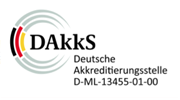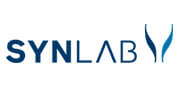LAB HOURS: MON - THU and SAT : 9:00 AM to 9:00 PM
FRI and SUN : 9:00 AM to 6:00 PM

Lecture - Hepatitis C diagnostic testing
FML in Sana'a, Yemen 2014

Diagnosis of Hepatitis C Virus infection
Why accurately measuring HCV RNA is vital to patient management
Dr. Sibylle Blumenthal
Scientific Supervisor, Freiburg Medical Laboratory, Dubai, UAE
Approximately 170 million people worldwide are infected with the hepatitis C virus, most of them undiagnosed. In about 20% of cases the virus is cleared, but 80% develop a chronic infection which over the years can cause permanent liver damage and cancer, in some cases ultimately leading to death. HCV infection results from contact with blood and body fluids from infected individuals. Since reliable screening methods for blood products are now available, i.v. drug abuse and unsafe sexual practices are the most important risk factors for HCV infection in industrialized countries. In contrast to hepatitis A and B, there is no vaccine available for HCV.
In laboratory medicine there are several options for diagnosing a hepatitis C infection. A first sign is finding elevated levels of ALT. Serologically, HCV antibodies can be detected using immunoassays. However, these appear only several weeks after exposure. To detect the virus directly, there are very sensitive tests detecting the presence of the viral genome as early as one to two weeks after exposure. This is done using real-time PCR, a very sensitive and reliable method. Additionally, genotyping of the virus by DNA hybridization gives a clear idea of which strain of the virus is present. This can aid in choosing the appropriate management and therapy.
During the course of treatment it is important to periodically check the viral load via PCR to assess the patient’s response to treatment and subsequently predict the SVR (sustained viral response) of the patient. The SVR is an efficacy measure and defined as the absence of detectable HCV RNA in the blood for at least six months after the end of treatment.

Lab hours
MON - THU and SAT 9:00 AM to 9:00 PM | FRI and SUN : 9:00 AM to 6:00 PM













